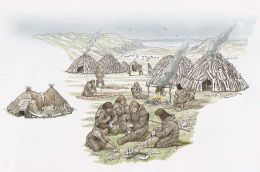A BRIEF HISTORY OF EXPERIAN
Experian’s roots date back nearly 200 years, making the credit reporting bureau the longest tenured among the “big three” status that the firm shares with TransUnion and Equifax. It’s also the biggest of the three bureaus, with data on more than 235 million people worldwide, headquarters in the U.S. and Europe, and a workforce of about 17,000 employees worldwide. But Experian didn’t become this impactful overnight. Here’s a brief look at the history of Experian and how it gradually morphed into the credit reporting giant that it is today:
Experian: A Brief History
- 1826: Experian’s roots can be traced back to London, England, in the early 1800s, when a group known as the Manchester Guardian Society began sharing information on citizens who failed to settle their debts. This was one of the earliest accounts of modern day credit reporting on record.
- 1897: We jump ahead and move from across the pond to Dallas, Texas, when a Dallas, Texas-based lawyer began compiling lists of local citizens based on whether or not they were at-risk consumers.
- 1960s: We take another big jump ahead in time to the early 1960s, when two aerospace engineers with a hunch that currency would transition from cash to credit formed a credit information unit branch of TRW, Inc. TRW’s credit information branch would eventually go on to become Experian in the 1990s.
- 1970s: TRW follows up its credit information branch with the launch of a small business database branch.
- 1980s: The credit information and small business database branches of TRW continue to see major growth, and by the mid-80s have accrued data on more than 90 million Americans.
- 1986: TRW began selling consumers their credit reports for an annual fee of $30 in this year. This eventually came to an end, however, as the Fair Credit Reporting Act granted consumers one free report each year.
- 1991: This year marked one of TRW’s biggest mistakes as a credit reporting agency. The mishap involved a TRW investigator concluding that about 1,500 Vermont residents had not paid their property taxes, causing their credit scores to take a big hit. Following this, similar mistakes came to light. These blunders put TRW in a negative light, forcing the company to make major changes to its operators and customer service practices.
- 1996: Experian is officially launched. Brian Capital and Thomas H. Lee Partners acquired TRW as Experian. Shortly after, the two firms sold Experian to England-based Great Universal Stores Limited (GUS).
- 2006: Experian de-merges from GUS and, for the first time, is listed on the London Stock Exchange.
- 2017: In March 2017, Experian agreed to pay a $3 million fine for dispersing incorrect credit information to various consumers. The fine was imposed by the Consumer Financial Protection Bureau.
- Present day: With headquarters in Dublin, Ireland, Nottingham, United Kingdom, and Costa Mesa, California, Experian reports operating revenue of about $4.5 billion (U.S.) annually. It operates in 37 countries and keeps data on some 235 million U.S. consumers and 25 million U.S. businesses.



